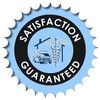
Mold Busters has provided comprehensive mold inspections and remediation recommendations to commercial and residential clients throughout the Bay Area since 2000. Owner Cheryl Pearce is a certified microbiologist and mold inspector and will take the time to address your concerns about the causes of mold, preventative measures, and health issues associated with mold exposure.
Services
Services
Report
Includes walk through of entire property to assess the presence of moisture intrusion, leaks, drainage problems or visible mold using moisture meter and temperature/humidity readings. Inspector will make recommendations to client regarding the need for samples and them collect them per agreement.
Final report includes a detailed summary of findings with photos from the visual inspection, an interpretation of the laboratory results, detailed site-specific recommendations with a remediation referral (if needed).The report will also include recommendations for addressing the moisture issues that caused the mold along with other advice regarding indoor air quality and ventilation.
Final report includes a detailed summary of findings with photos from the visual inspection, an interpretation of the laboratory results, detailed site-specific recommendations with a remediation referral (if needed).The report will also include recommendations for addressing the moisture issues that caused the mold along with other advice regarding indoor air quality and ventilation.
Mold 101
Report
Indoor mold growth is frequently attributed to moisture intrusion or water leaks that do not normally occur inside; when this happens, wet or damp building materials such as drywall, wallpaper, and wood, can provide food sources capable of supporting mold growth. Gradually, mold will destroy the materials it is growing on and can cause extensive property damage.
FAQs
Report
Q: I have a musty smell in my home but don't see any mold, what does this mean? A: When fungi are actively sporulating (growing) they can produce certain chemicals (called volatile organic compounds or VOCs) that give off a "musty" odor. Q: How do you test for mold if it's not visible?
A: Air sampling, using a spore trap, is the best way to do this; this method employs a vacuum that draws in a certain volume of air, spores in the air are impinged (or trapped) on a coverslip which is then examined under a microscope so that the number and types of mold spores present can be determined.
A: Air sampling, using a spore trap, is the best way to do this; this method employs a vacuum that draws in a certain volume of air, spores in the air are impinged (or trapped) on a coverslip which is then examined under a microscope so that the number and types of mold spores present can be determined.
Reviews

Be the first to review Mold Busters.
Write a Review
